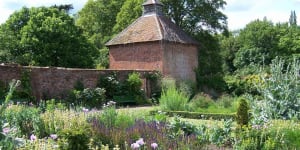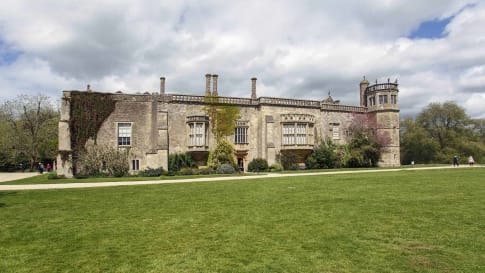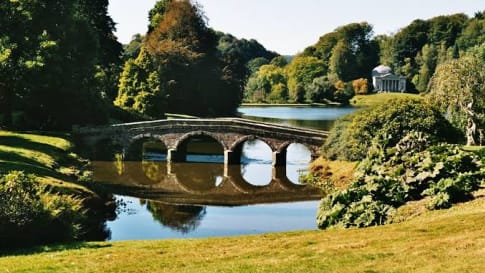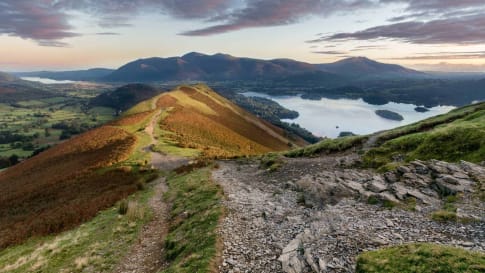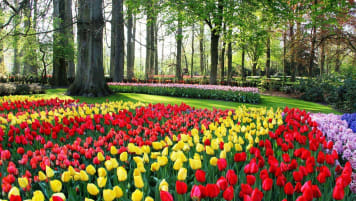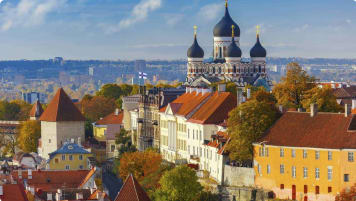British Gardens Small Group Tour including Chatsworth RHS show
From £8,775GBP
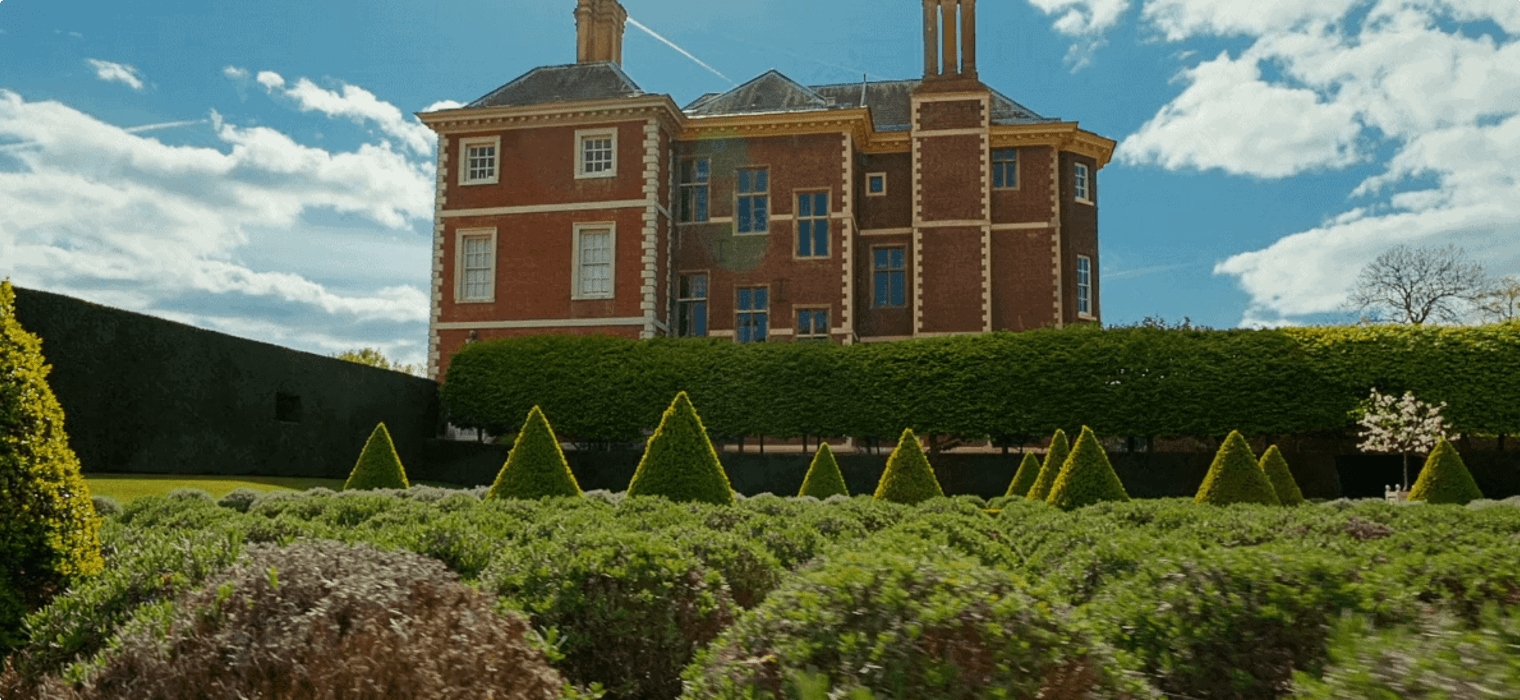
Highlights
- 1. Spend a day at Wisley RHS gardens
- 2. Experience the sights and delights of the RHS Chatsworth Flower Show
- 3. Take in the remarkable baroque garden at Powis Castle, the last word in formal horticultural style.
- 4. Visit gardens and landscapes by Humpry Repton, Capability Brown & Gertrude Jekyll
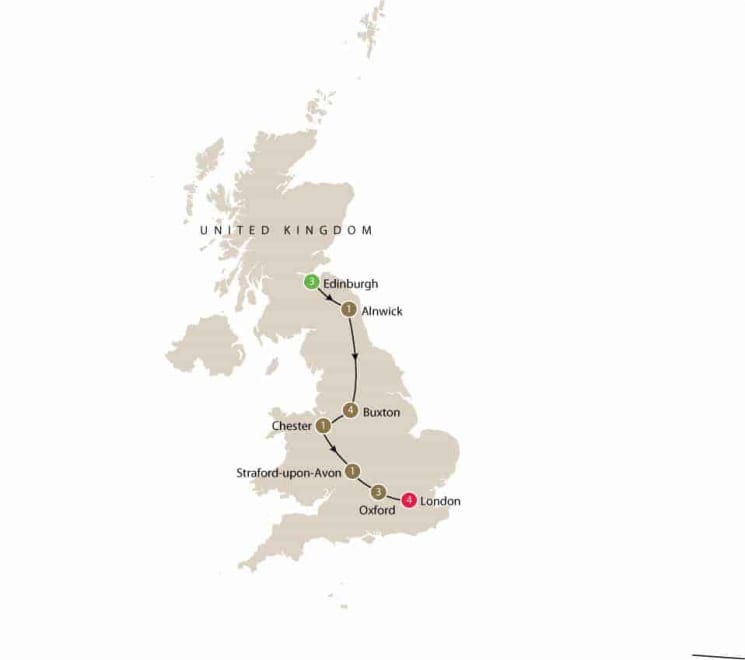
Departure Dates
| Departure Date | Price |
|---|---|
| 06 June 2025 Ends 21 June 2025 • 16 days £8,775 Twin £10,645 Single Available | Selected |
| 06 June 2026 Ends 21 June 2026 • 16 days £9,295 Twin £11,424 Single Available | |
| 06 June 2027 Ends 21 June 2027 • days £9,479 Twin £11,609 Single Available |
British Gardens | Small Group Tour
A 19-day small group tour of British gardens. This tour includes a day at the Royal Horticultural Society show in Chatsworth, or RHS Chatsworth.
For the last few years, Odyssey has offered a tour to the Chelsea flower show and surrounding areas. Thanks to the high level of interest in gardens and garden design, Odyssey is now offering this small group tour of British gardens, including RHS Chatsworth, for you to enjoy with like-minded people.
The itinerary for the British Gardens small group tour
The small group tour of British gardens visits sites in Scotland and England. At each location, we meet with some of the best horticultural and garden design guides in Britain. During our visit, they will share their stories of the history of gardens from Capability Brown, Britain's most famous landscape designer to contemporary garden design today.
As with many of Odyssey’s tours, the small group tour of British Gardens has an educational focus. By the tour's conclusion, we return with a greater understanding of three centuries of garden design in Britain. In addition, an even greater appreciation for this enduring form of expression.
The small group tour of British gardens commences with three nights in amazing Edinburgh. We make our way south-east to Alnwick, then on to Buxton - our base for four nights and the location of RHS Chatsworth. From Buxton, we travel to Chester, and then Stratford Upon Avon. Three nights in Oxford will follow, before our group arrives in London. We will spend four nights in London before the conclusion of our tour.
On the small group tour of British gardens we have chosen the best gardens across the UK. The majority of those visited are today under the stewardship of the National Trust. If you would like to read more about Britain's National Trust, this article may be of special interest. The gardens selected have received critical acclaim and are recognised as among the world's best. During our tour, we learn about the work of key historical figures including Capability Brown, Humpry Repton and Gertrude Jekyll. Our garden tour moves from grand landscape designs to the finesse of planting achieved by the Nicholson's at Sissinghurst.
The History of Britain's Gardens
Britain is famous all over the world for its gardens and many of them have strong and proud historical backgrounds. This small group tour has been designed for garden lovers. We will visit gardens both great and small, and enjoy the expertise of our local guides, as well as special talks from the gardeners themselves. The diversity of gardens in Britain is striking. From classical to contemporary, boldly baroque or Italian-style, each garden has a unique history. Our British Gardens small group tour will bring these histories to life.
The small group tour of British gardens is just one of a number of garden tours offered each year by Odyssey Travellers. This small group tour is designed especially for senior or mature travellers, and we welcome both couples and solo travellers.
If you'd like to learn more about Britain, England or Scotland, visit Odyssey's country profiles where all other tour departures are listed as well. For more details on this tour, click the ‘Top 5’ or ‘Itinerary’ buttons above! If you’re keen to experience this tour, please call or send an email. Or, to book, simply fill in the form on the right hand side of this page.
Articles about England
The following articles are either published by Odyssey Traveller for mature aged and senior travellers or carefully selected external sources to maximise their knowledge and enjoyment of England when visiting:
- Great Britain Travel tips
- Understanding British Churches
- English Village History
- Britain's National Trust.
- Roman roads
- Gargoyles and Grotesques; an understanding.
- Victorian Country life
- Jane Austen's England
- How to read the British landscape
- The Lake District for poets & Romantics
- History of England: - PODCASTS
- Tudor England
- Country life magazine articles
- Origin of Cotswold stone
Gallery
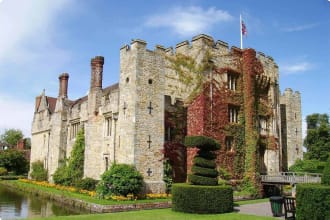
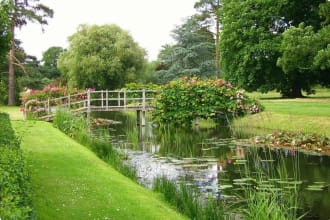
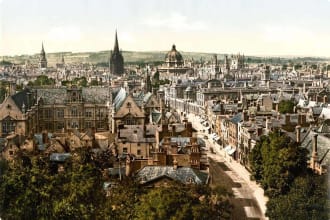
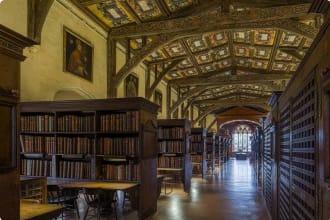
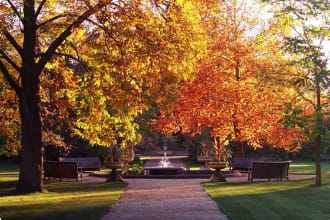


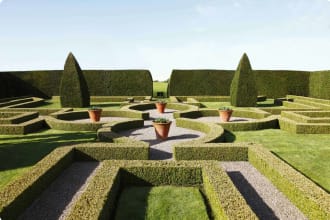
Itinerary
16 days
Day 1: Edinburgh
Accommodation: Overnight Haymarket Hotel or similar
We arrive in Edinburgh and make our way individually to our hotel. We meet in the evening for orientation and a welcome dinner.
Day 2: Edinburgh
Accommodation: Overnight Haymarket Hotel or similar
We commence our tour of Britain’s gardens with sites in and around Edinburgh. We visit the Royal Botanic Garden, which was founded in 1670 as a physics garden and maintains its scientific roots in the conservation of plants. We explore the medieval ruins of Dirleton Castle, which is renowned for its freshly rejuvenated gardens. The design boasts the world’s longest herbaceous border. We marvel at the lochs, glens and cliffs of Holyrood Park as we make our way to Arthur’s Seat. This rocky summit offers picturesque views of Edinburgh. It was described by Robert Louis Stevenson as “a hill for magnitude, a mountain in virtue of its bold design”.
Day 3: Edinburgh
Accommodation: Overnight Haymarket Hotel or similar
We continue our tour of Edinburgh’s historic gardens with visits to Scone Palace, Glamis Castle and Edinburgh Royal Castle.
The Edinburgh Castle is an historic fortress atop Castle Rock. The rock was settled as far back as the Iron Age. It is now in the care of Historic Scotland, an arm of the government, and is one of Scotland’s premier tourist attractions. Glamis Castle is called Scotland’s most beautiful. The extensive gardens change throughout the seasons, and include a walled garden, an Italian garden, a grass maze, and Monet-style fountains. The open grounds of Scone Palace boast the David Douglas pavilion, named for the palace’s head gardener from 1799 to 1806.
Today with a specialist local guide with the tour for the day we visit and learn about 3 unique gardens in and around Edinburgh including Edinburgh Royal Castle, Scone Palace and Glamis Castle
Day 4: Alnwick
Accommodation: Overnight White Swan Hotel or similar
Today, we make our way to Alnwick, England. Along the way, we visit Cragside House and gardens. This Victorian country house at the heart of Northumberland is a very popular spot. It was home to William Armstrong, a scientist and philanthropist who became known as the “Modern Magician”. Among his talents was an eye for landscape design, and he experimented with trees, plants and water to produce stunning gardens.
One arrival in Alnwick, we enjoy a short lecture on the work of Capability Brown at Alnwick Castle. We also visit the acclaimed contemporary Poison Garden in the grounds of the castle.
Dinner will be provided this evening.
Day 5: Buxton
Accommodation: Overnight White Swan Hotel or similar
We depart Alnwick for Buxton today. We pause at Northumberliandia, a huge land sculpture in the form of a reclining female figure – cheekily called “the Lady of the North”. Our local guide will provide insights into the design and approach to this significant piece of artwork. It was completed in 2012.
In the afternoon, we visit Fountains Abbey and Studley Royal Water Garden.
Fountains Abbey is one of the largest and best preserved ruined Cistercian monasteries in England. Founded in 1132, the abbey operated for over 400 years. Up until 1539, when Henry VIII ordered the Dissolution of the Monasteries.
We enjoy a group dinner this evening.
Day 6: Buxton
Accommodation: Overnight White Swan Hotel or similar
We spend today at the Chatsworth Royal Horticultural Society show: a flower show that blends tradition with the unexpected and innovative.
Day 7: Buxton
Accommodation: Overnight White Swan Hotel or similar
Today we visit Blakewell Gardens and Haddon Manor. Haddon Manor has been described as “the most complete and most interesting medieval house of its period in England”. Our specialist guide will share more of this story with you during your visit.
In the late afternoon, we join the gardener of Shugborough for a talk and walking tour through the estate of this acclaimed and wonderful garden.
Day 8: Buxton
Accommodation: Overnight White Swan Hotel or similar
The Yorkshire Sculptural Park is foremost on today’s itinerary. This open-air gallery shows work by British and international artists, including Henry Moore and Barbara Hepworth, set in attractive grounds. It is regarded as a leading international centre for modern and contemporary art.
This afternoon, we visit Renishaw Hall for a guided tour. Renishaw Hall’s gardens are Italian in design, and were laid out over 100 years ago by Sir George Sitwell. The garden is divided into ‘rooms’ with yew hedges, flanked with classical statues. These ‘rooms’ have been filled with an impressive collection of plants. The garden is set in acres of parkland with lakeside and nature walks alongside English herbaceous borders and ornamental ponds, a delight for garden enthusiasts.
Day 9: Chester
Accommodation: Overnight BW Hallmark Hotel Chester Westminster or similar
Today, we begin our sightseeing with a visit to visit Ness Botanical Gardens, overlooking the River Dee. Then we check out Bodnant Gardens, these stunning Gardens are famous for its Laburnum arch, but the Rhodendron collection and four national collections are just as impressive.
We enjoy dinner as a group this evening.
Day 10: Stratford Upon Avon
Today, we make our way to Stratford Upon Avon. We visit Powis Castle and Gardens, followed by Hidcote Manor and its lovely garden.
The 18th century saw a concerted reaction against the formality of garden design. Thankfully, Powis Castle has preserved a true Baroque garden so that enthusiasts can appreciate this particular style.
Hidcote Manor boasts a famous Arts and Crafts garden, established around 1905. Its founder, Lawrence Johnston, was a keen garden designer, with a strong sense of artistic composition. He was influenced by the work of Alfred Parsons and Gertrude Jekyll, who created outdoor ‘rooms’. Accordingly, yew, holly and beech hedges are used to define a series of garden rooms. One room is occupied only by a circular raised pool. The character of others is derived from the inspired planting itself.
A group dinner will be provided this evening.
Day 11: Oxford
Accommodation: Overnight Royal Oxford Hotel or similar
Upon our arrival in Oxford today, we visit the Oxford University Botanic Garden, followed by Blenheim Palace.
The University of Oxford Botanic Garden is Britain’s oldest, founded in 1612. It was initially used to cultivate plants for medicinal research. Today, it holds one of the most diverse collections of plants in the world, with some 8,000 species representing over 90% of higher plant families. The collection is spread over 1.8 hectares (4.5 acres) of scenic grounds.
Blenheim Palace is the principal residence of the Dukes of Marlborough. It is the only non-royal, non-Episcopal house in England to hold the title of palace. In 1987, UNESCO granted it World Heritage status. The palace preserves the short-lived English-baroque style, and is also notable as the birthplace and childhood home of Sir Winston Churchill. The gardens and grounds were designed by Capability Brown. During his ten-year tenure, he created the Great Lake, and successfully engineered a landscape that appears entirely natural.
Dinner will be provided this evening.
Day 12: Oxford
Accommodation: Overnight Royal Oxford Hotel or similar
Today, we visit Ascott House and its elegant gardens. It was originally built as a farm house during the reign of James I. It was acquired by Baron Mayer de Rothschild in 1873, and then given to his nephew Leopold de Rothschild. It was under the junior Rothschild’s patronage that the buildings and grounds were transformed. The gardens were designed by Sir Harry Veitch as a birthday present from Leopold to his wife.
Nearby is Waddesdon Manor. This property was also owned by the Rothschild family. It was built for Baron Ferdinand de Rothschild as a weekend house, in the neo-Renaissance style of a French chateau. The garden was designed to entertain weekend party guests. Beautiful garden sculptures and an aviary feature in these elaborate grounds.
Day 13: Oxford
Accommodation: Overnight Royal Oxford Hotel or similar
Today the tour commences with a tour of Stowe.
The Landscape Garden at Stowe was created in three main phases, showing the development of garden design in 18th-century England (this is the only garden where all three designers worked):
From 1711 to c.1735 Charles Bridgeman was the garden designer[29] and John Vanbrugh the architect.
In 1731 William Kent. Kent’s architectural work was in the newly fashionable Palladian style.
In 1741, Capability Brown was appointed head gardener[33]. He worked with Gibbs until 1749 and with Kent until the latter’s death in 1748. Brown departed in the autumn of 1751 to start his independent career as a garden designer[34].
Stowe are today a significant example of the English garden style.
At Stowe gardens we can pause for tea and a bite to eat and admire the view before returning to our accommodation.
Afternoon at your leisure.
Day 14: London
Accommodation: Overnight London Lodge Hotel or similar
Today, we visit Wrest Park for a talk on English houses and Capability Brown. The remainder of the day will be spent at leisure, before we meet again in the evening for a group dinner.
Day 15: London
Accommodation: Overnight London Lodge Hotel or similar
This morning, we enjoy a Wisley (Royal Horticultural Society) RHS garden tour.. Wisley is a large and diverse garden. Among its varied features is a series of small scale “model gardens”, designed to inspire and teach visitors what they might achieve in their own gardens. Additionally, new cultivars of species are assessed here in the trial fields.
The afternoon is set aside for your leisure.
Day 16: London
Accommodation: Overnight London Lodge Hotel or similar
Today, we visit Edenbridge, Kent. We meet leading garden designer Roger Platts at his very own private garden ‘Leydens’. Platts has established an international reputation for his garden consultancy work. At the time of writing, he holds 8 RHS gold medals, and is working on a second book to follow his first publication, Traditional Gardens.
In the afternoon, we visit nearby Hever Castle, which is set in 124 acres of stunning, award-winning grounds. The English Rose Garden boasts 4000 fragrant rose bushes. Enjoy the plantings along the beloved Pompeiian Wall, marvel at the giant topiary chess set, and stroll through the Tudor Garden. The attractions are too many to name at the Hever Castle garden. You will simply have to see for yourself on our walking tour.
Day 17: London
Accommodation: Overnight London Lodge Hotel or similar
We make our way to Sissinghurst Castle, the gardens of which are a monument to love. Poet Vita Sackville West and Harold Nicolson fell for crumbling Sissinghurst Castle in 1930. At that stage, the grounds were mostly used by resident farm workers for growing vegetables and crops. Inspired by Gertrude Jekyll, the couple undertook a decade-long labour of love, planting to outdoor ‘rooms’ that each have a distinct character. Sackville-West and Nicolson were the last private owners of Sissinghurst Castle, before it passed to the care of the National Trust in 1967.
In the afternoon we pay a quick visit to Bayham Old Abbey, on the Kent-Sussex border. The sandstone ruins tell of the 13th to 15th centuries. They now sit within a landscape designed by Humphry Repton, the prolific successor to Capability Brown.
We enjoy a farewell dinner in a local restaurant tonight.
Day 18: London
Our tour concludes after breakfast.
Includes / Excludes
What’s included in our Tour
- 17 nights accommodation.
- Meals as indicated on the itinerary.
- All field trips and associated entry fees as per the itinerary.
- All travel is in modern, air-conditioned coaches.
- Services of a tour leader for the duration of tour.
- Gratuities and necessary tips.
What’s not included in our Tour
- International airfares.
- Comprehensive travel insurance.
- Items of a personal nature such as telephone calls and laundry.
Participants must be able to carry their own luggage, climb and descend stairs, be in good health, mobile and able to participate in 3-5 hours of physical activity per day, the equivalent of walking / hiking up to 8 kilometers per day on uneven ground.
Book now
Make it a private tour
Easing your journey
Crossing international borders with restrictions
The list of requirements to travel internationally has changed and will continue to change for several years. Odyssey is here to assist you in managing your way through these requirements:
For more information see our Crossing international borders with restrictions page.
Book With Confidence
If less than 30 days before your tour starts you are unable to travel as a result of Government travel restrictions, Odyssey Traveller will assist you with a date change, provide you with a credit or process a refund for your booking less any non-recoverable costs.
See Terms and conditions for details.
Peace of Mind Travel
The safety of our travellers, tour leader, local guide and support staff has always been our top priority and with the new guidelines for public health and safety for keeping safe for destinations around the world, we’ve developed our plan to give you peace of mind when travelling with us.
See Peace of Mind Travel for details.
Reading List Download PDF
British Gardens in Time: The Greatest Gardens and the People Who Shaped Them
Katie Campbell
British Gardens in Time covers the creation of the most exciting British gardens today and the work of iconic garden makers over the last 300 hundreds. From Lancelot 'Capability' Brown at Stowe to Christopher Lloyd at Great Dixter, author Katie Campbell leaves no stone unturned as she digs through the foundation of this gardening nation. Starting with a romp through history from the Romans at Fishbourne to the start of the English Landscape Movement, this book details the main trends, influences and needs that gardeners have placed on ornamental horticulture across the British Isles.
Secret Gardens of the Cotswolds
Victoria Summerley
Secret Gardens of the Cotswolds is a captivating photographic portrait of the greatest British gardens and the lords, ladies and gardeners who own and manage them, with a focus on Gloucestershire and Oxfordshire. It features 20 gardens designed by some of the leading contemporary garden designers from across the world. Accompanying the photographs are be essays on the design and planting that explain the designers' inspiration and passion alongside historical and factual information. This is a very personal view by photographer Hugo Rittson Thomas and journalist Victoria Summerley, both residents of a corner of England with more than its fair share of beautiful and interesting gardens. Some of the gardens are strictly private, while others are regularly open to visitors, but all can now be savored and enjoyed along with those who know them best.
Gardens of the National Trust
Stephen Lacey
A substantially revised edition to showcase superb new photography and to introduce newly acquired properties, along with fascinating practical gardening guides from the Trust's expert head gardeners
Britain's National Trust has the finest collection of gardens ever assembled under one ownership—the greatest in number, diversity, historic importance, and quality. Together, they form the world's most important collection of cultivated plants, distinguished by their beauty, rarity, historical interest, and scientific value. Historically and horticulturally, a vivid picture of the gardens is painted, with all the major periods represented—from a knot garden from a 1640 design to Victorian Gardens and the famous plantsmen's gardens of the last century. Both a practical guide and a rich source of inspiration, the book includes horticultural details, a complete plant list, and a section on the many other Trust gardens to visit. Throughout, splendid color images by the country's leading photographers bring to life the beauty of each garden.
One Hundred English Gardens: The Best of the English Heritage Parks and Gardens
Patrick Taylor
This elegant book presents one hundred of the most beautiful historic gardens in England. The gardens range from the neoclassical paradise of Stourhead to the subtropical splendour of Tresco Abbey and the soothing calm of the White Garden at Sissinghurst, all photographed in stunning color by leading British garden photographers. Each garden is presented at its most glorious moment-- whether at twilight or midday, in autumn, or at the height of summer.
English Heritage has spent over ten years identifying and grading the fabulous wealth of parks and gardens throughout England on the basis of their historical significance, state of preservation and level of general interest. This information is compiled in the English Heritage Parks and Gardens Register, from which the respected horticultural author Patrick Taylor has selected one hundred favorites. In his lively and informative style, he reveals the historic background to each garden and discusses the modern-day plantings.
A comprehensive index, county map, and opening times for each garden offer information for the traveler. Lush, full-color photographs capture the essence of each garden for an inspiring tour of the best of a grand gardening tradition.
The English Garden
Ursula Buchan
Gardening writer Ursula Buchan has combined forces with garden photographer Andrew Lawson to explore the English garden and capture its richness and diversity. Focusing on gardens that are open to visitors, she explains the historical trends and the work of garden makers of the past that have shaped the English gardens we see today. With a wealth of outstanding examples, illustrated with 350 photographs, she describes many garden styles – formality, the landscape tradition, the Arts and Crafts style, the cottage garden and recent phenomena such as New Naturalism. Color, water, ornament and foreign influences are among the themes she considers, as well as such defining characteristics as the very English urge to grow flowers and the nation's love of roses.
The English Country House Garden: Traditional Retreats to Contemporary Masterpieces
George Plumptre
There is something special about the English country house garden: from its quiet verdant lawns to its high yew hedges, this is a style much-desired and copied around the world. The English country house is most often conceived as a private, intimate place, a getaway from working life. A pergola, a sundial, a croquet lawn, a herbaceous border of soft planting; here is a space to wander and relax, to share secrets, and above all to enjoy afternoon tea.
But even the most peaceful of gardens also take passion and hard work to create. This new book takes a fresh look at the English country house garden, starting with the owners and the stories behind the making of the gardens. Glorious photographs capture the gardens at their finest moments through the seasons, and a sparkling and erudite text presents twenty-five gardens - some grand, some personal, some celebrated, some never-before-photographed - to explore why this garden style has been so very enduring and influential.
From the Victorian grandeur of Tyntesfield and Cragside, to the Arts & Crafts simplicity of Rodmarton Manor and Charleston; from Scampston, in the same family since the 17th century, to new gardens by Dan Pearson and Tom Stuart-Smith; and with favourites such as Hidcote and Great Dixter alongside new discoveries, this book will be a delicious treat for garden-lovers.
Bread for all
Chris Renwick
Today, everybody seems to agree that something has gone badly wrong with the British welfare state. In the midst of economic crisis, politicians and commentators talk about benefits as a lifestyle choice, and of 'skivers' living off hard-working 'strivers' as they debate what a welfare state fit for the twenty-first century might look like.
This major new history tells the story of one the greatest transformations in British intellectual, social and political life: the creation of the welfare state, from the Victorian workhouse, where you had to be destitute to receive help, to a moment just after the Second World War, when government embraced responsibilities for people's housing, education, health and family life, a commitment that was unimaginable just a century earlier. Though these changes were driven by developments in different and sometimes unexpected currents in British life, they were linked by one over-arching idea: that through rational and purposeful intervention, government can remake society. It was an idea that, during the early twentieth century, came to inspire people across the political spectrum.
In exploring this extraordinary transformation, Bread for All explores and challenges our assumptions about what the welfare state was originally for, and the kinds of people who were involved in creating it. In doing so, it asks what the idea continues to mean for us today.
Medieval Woman: Village Life in the Middle Ages
Ann Bauer
A history of peasants in the Middle Ages, the story takes the reader into the life of Marion, the carpenter's wife, and her extended family as they struggle to survive through hardship, featuring a year in their lives at the mercy of the weather and the Lord of the Manor. Existing without soap, paper or glass and only with the most basic of tools, we learn how they survive starvation, sickness, fire and natural disaster in their home on the edge of the Weald.
Britain's Ferns: A Field Guide to the Clubmosses, Quillworts, Horsetails and Ferns of Great Britain and Ireland
James Merryweather
This is a comprehensive, lavishly illustrated and user-friendly photographic identification guide to the fifty-seven ferns and seventeen other pteridophytes that occur in Britain. It is the perfect companion for botanists, naturalists, professional ecologists and anyone else with an interest in this fascinating group of non-flowering vascular plants. Designed to appeal to beginners and experts alike, this authoritative book includes novel identification keys and comparison tables that have been carefully devised to present only essential, easily understood technical terms and descriptions, avoiding jargon as much as possible. Cross-referenced throughout to facilitate the comparison of similar species, this definitive field guide is the go-to source for identifying these species with confidence.
- Features hundreds of stunning colour photographs
- Comprehensive coverage of Britain's 57 species of ferns, 6 clubmosses, 3 quillworts and 8 horsetails
- Includes novel, easy-to-use, jargon-free identification keys and comparison tables
- Beautifully designed, user-friendly and accessible
